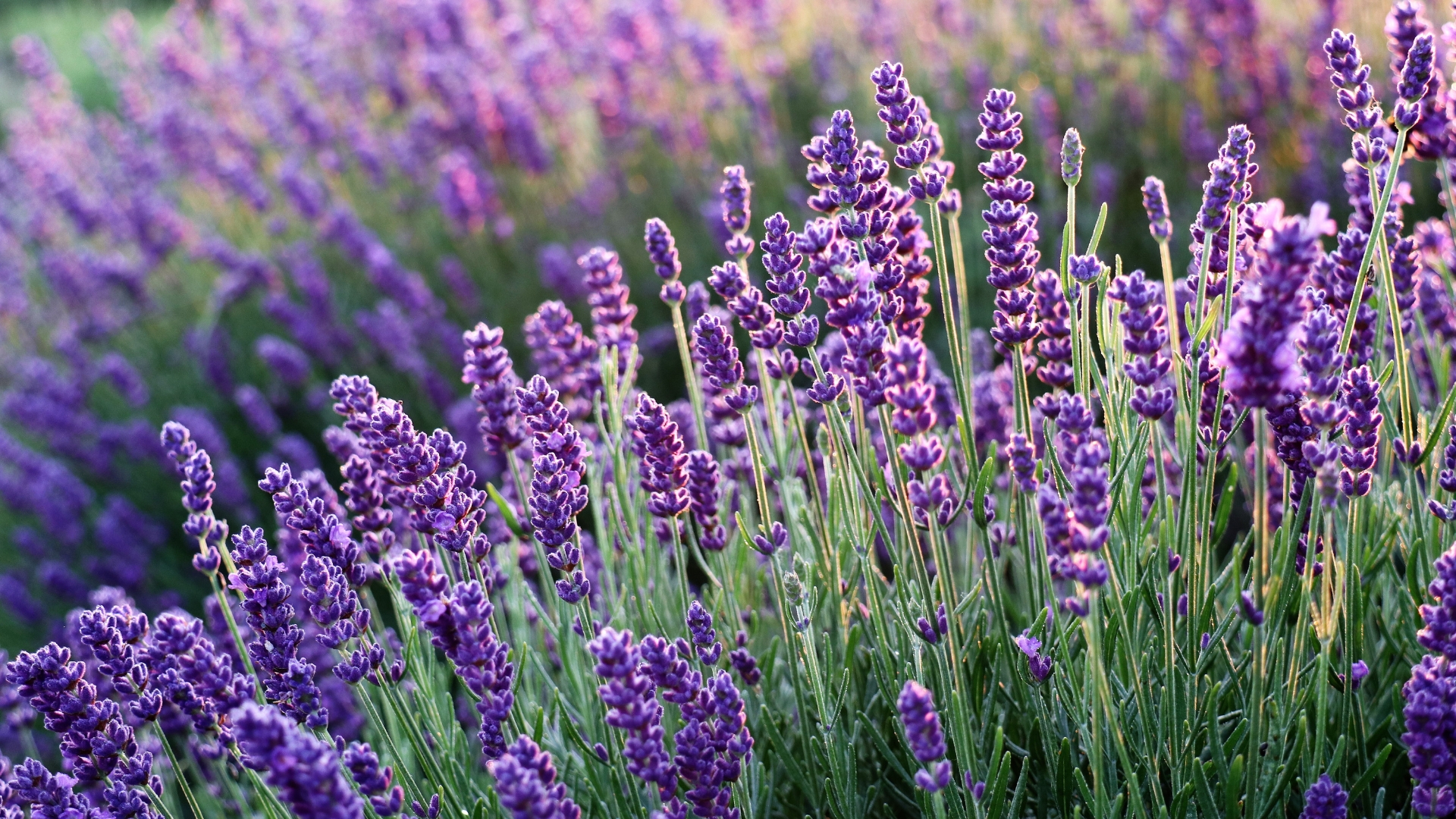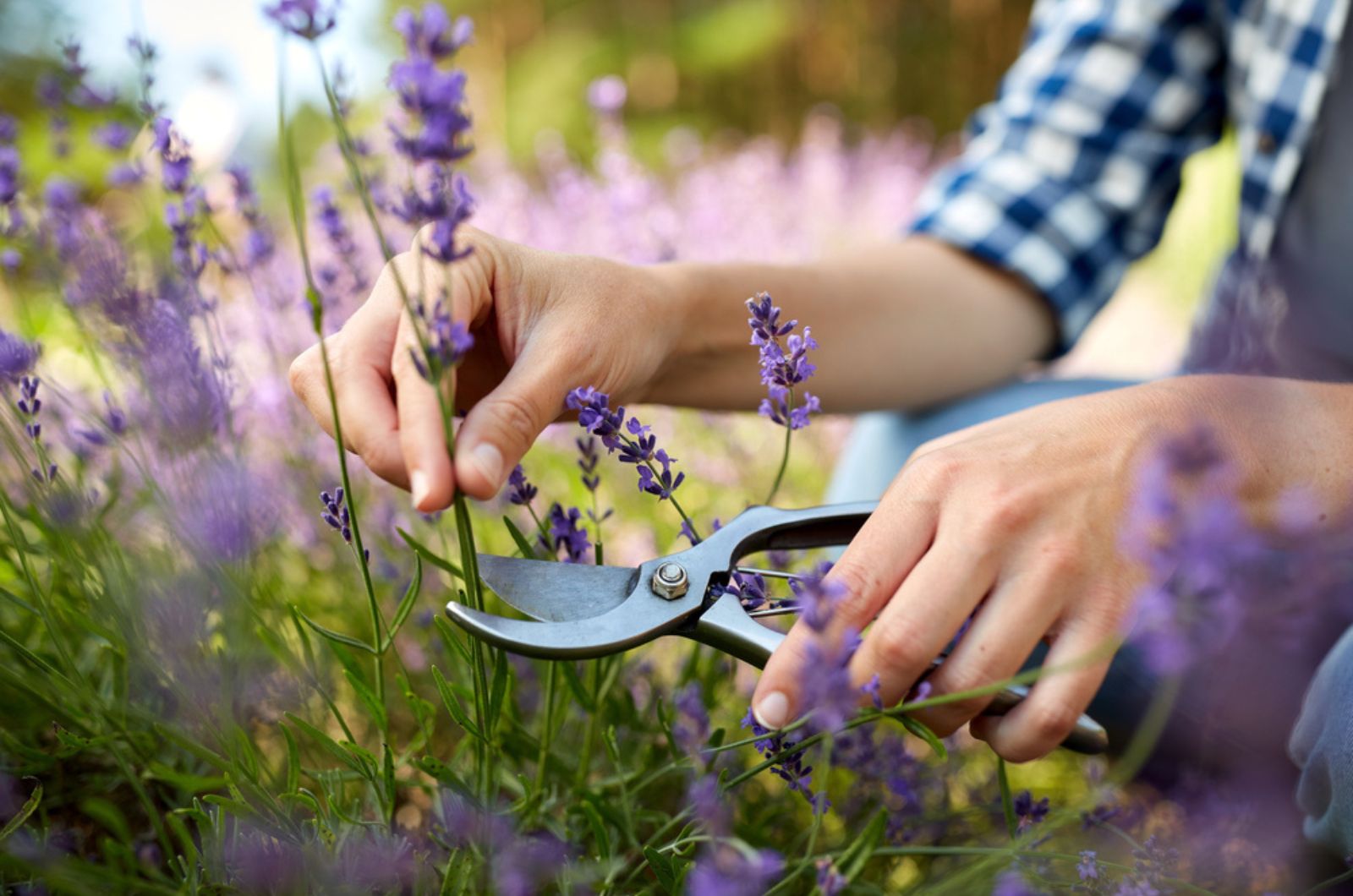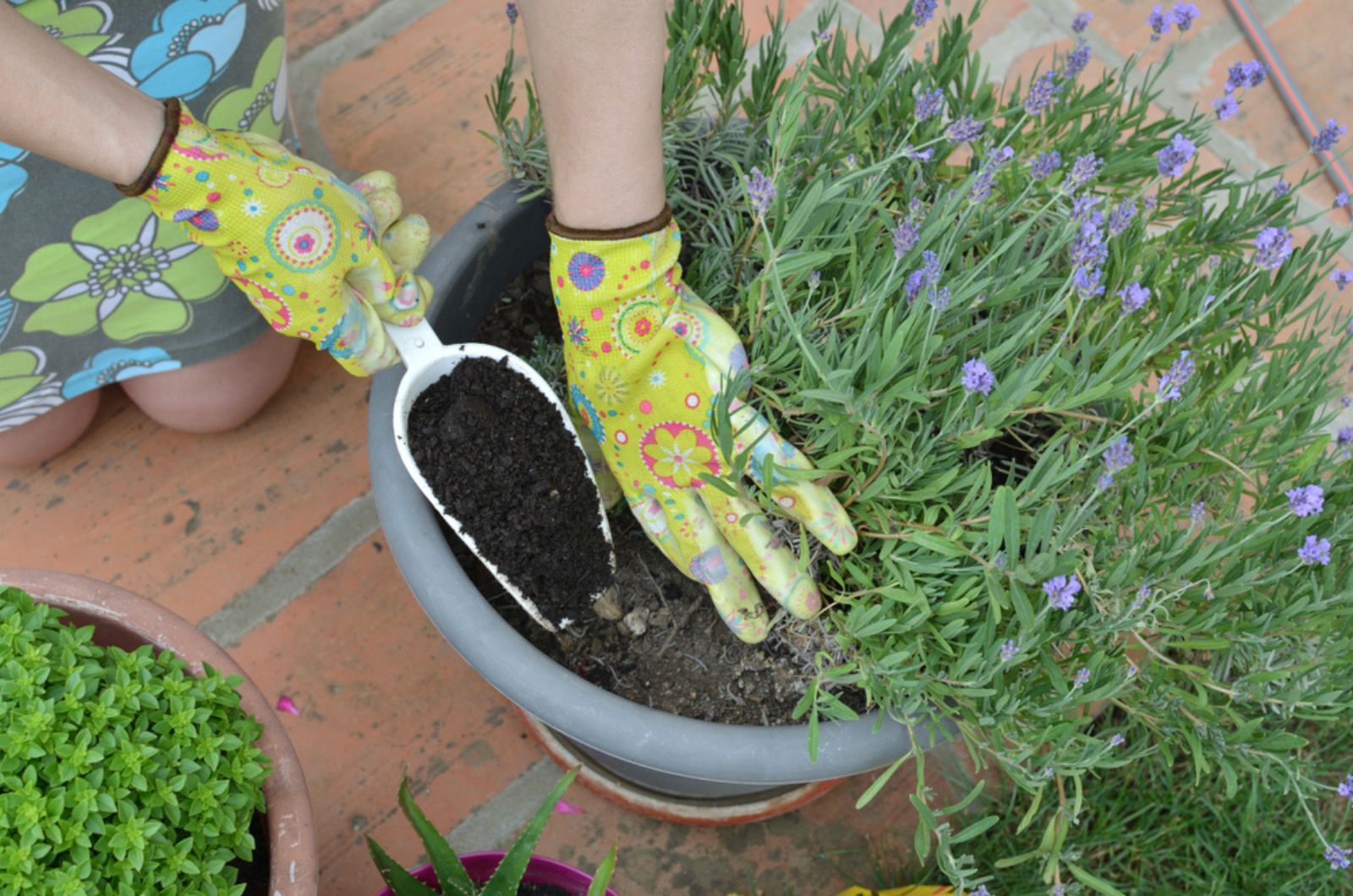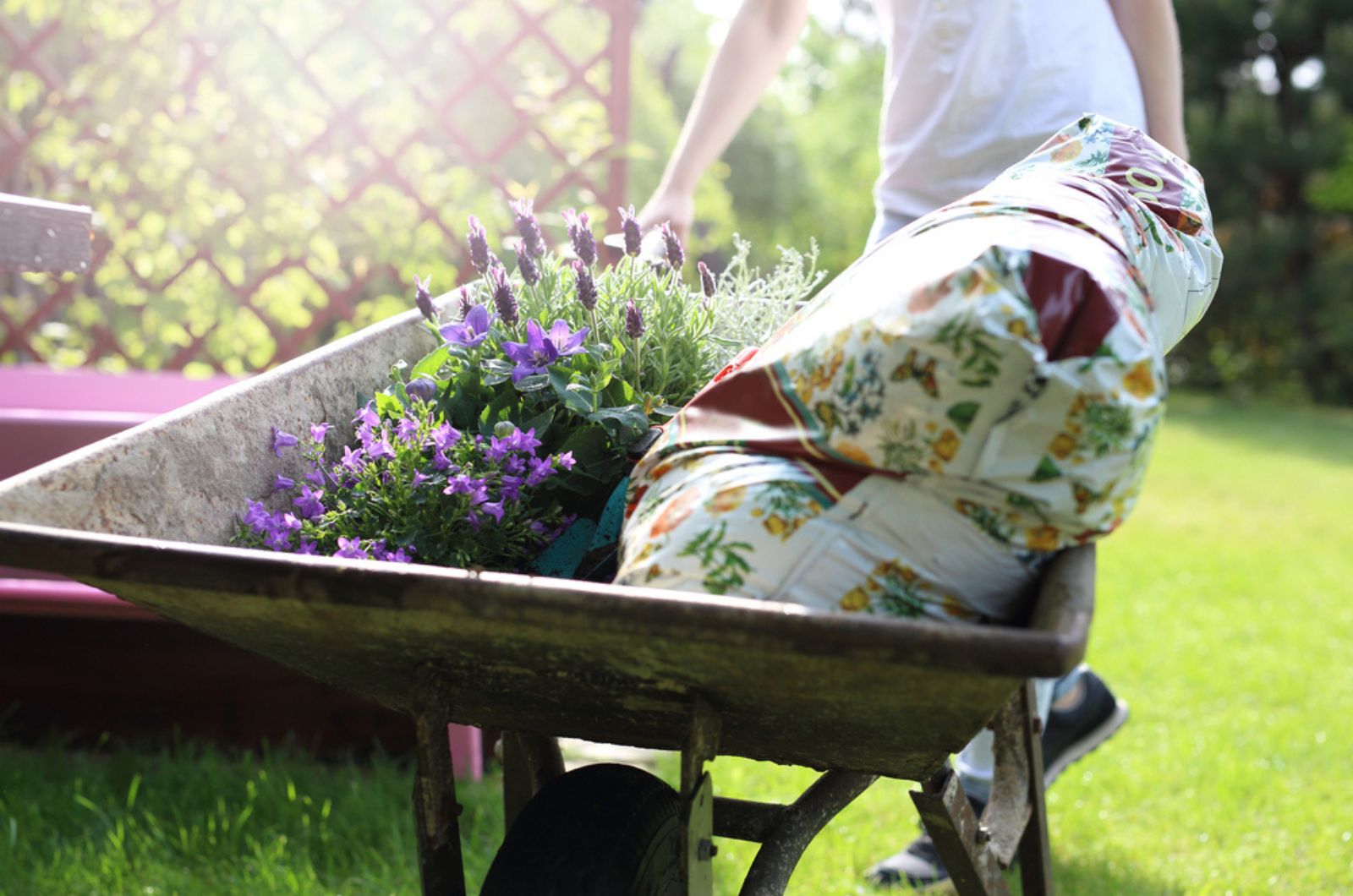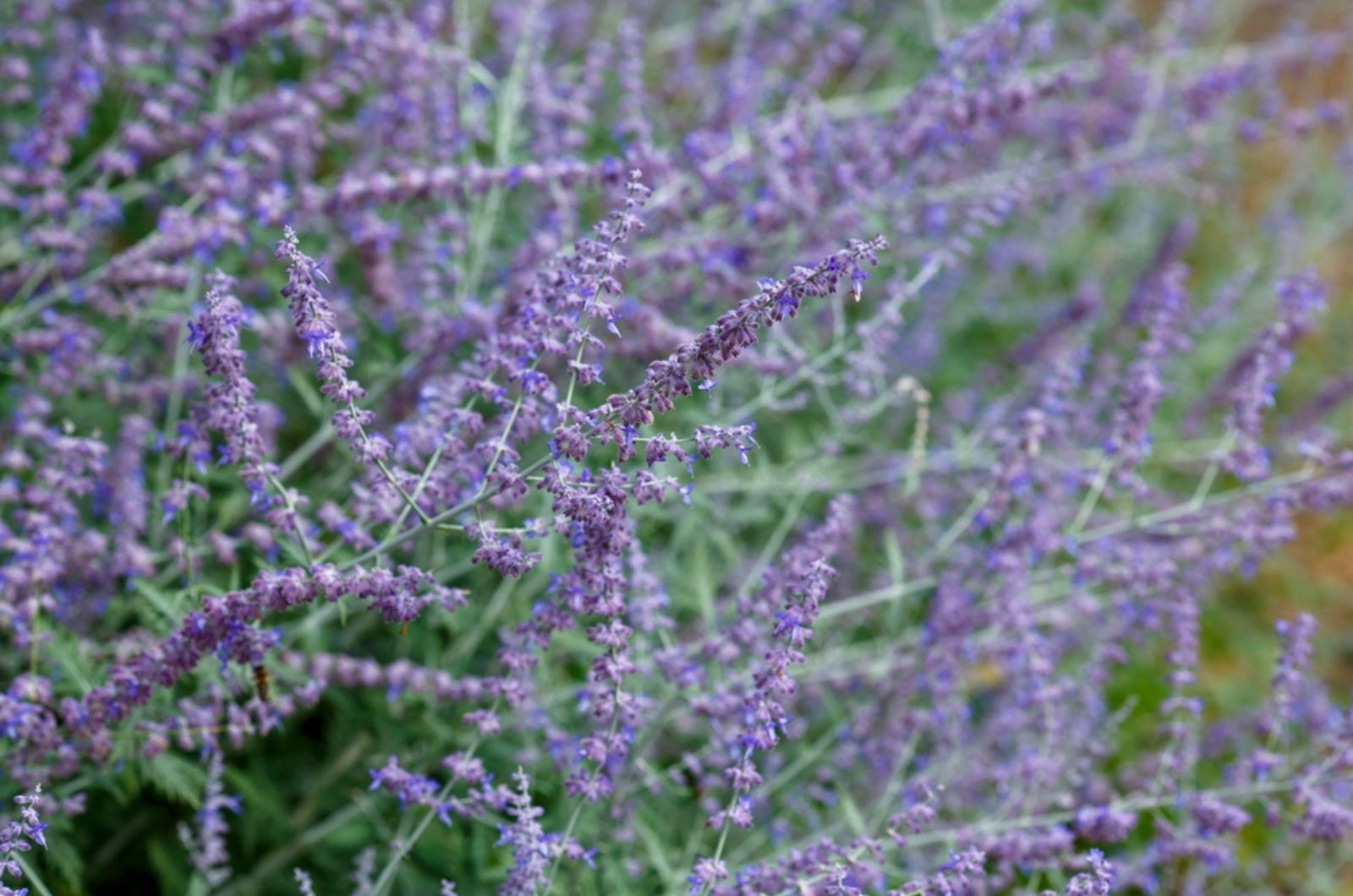Lavender, with its mesmerizing fragrance and quite easy-to-follow plant care guide, is a staple of every Mediterranean-inspired garden!
These sun-loving plants can grow and thrive in different conditions, attracting pollinators and adorning your garden with lovely blue-purple leaves.
But, what happens when your lavender starts to look woody and dry?
Well, there are some mistakes that can negatively affect your lavender plants, such as using too much fertilizer or not pruning properly.
In this article, you will learn simple steps to revive your plants and enjoy a thriving garden. Let’s make your lavender flourish again!
1. Pruning Is The Key
There are a few rules you need to follow when pruning lavender – you can’t just cut it all the way back because it doesn’t grow easily from old wood.
What you should do instead is gather green stems and cut them about 2 or 3 inches above the woody tissue (always disinfect your pruners with rubbing alcohol before pruning).
Trim the lavender by cutting it back in pieces until the plant is roughly one-third of its original height. Take care not to slice through the woody tissue as this can harm the plant and prevent new growth from emerging from it!
Related: What’s The Best Time For Pruning Lavender?
2. Don’t Use Too Much Fertilizer
More plant food means more nutrients and plant growth, right?
Well, not quite! Lavender is a type of plant that doesn’t need much fertilizer; it’s adapted to growing in poor soils, so adding too many nutrients might come as a shock to your lavender plant.
I would recommend you just use an organic compost to nourish your lavender – add a 2-inch layer in the spring so it will leech into the soil and improve nutrient availability.
You don’t need to fertilize lavender more than once a year. If you do so, excess fertilizer will only lead to lack of blooms and burnt foliage.
Related: 11 Essential Tips For Growing Amazing Lavender
3. Improve The Soil Drainage
When growing lavender, it’s important to provide it with well-draining soil. If you are dealing with heavy clay soils that can easily get water-logged, then you should consider changing it for lavender.
The best type of soils for lavender are loam-based ones that are also slightly alkaline (pH between 6.5 and 7.5). Add some vermiculite or perlite to improve the drainage because lavender plants don’t tolerate extra moisture.
When growing lavender in pots, it’s very crucial to pay attention to the compost structure – plants will appreciate the increased air that horticultural grit provides to their roots, and its ability to improve compost’s drainage.
You could use 1 part grit, 1 part perlite, and 2 parts organic compost to create the perfect growing substrate for your lavender.
Related: Is Lavender Drought-Tolerant And Which Types Are Best For Dry Environments?
4. Rejuvenate Woody Plants
If you let lavender grow without pruning, then it might get a bit woody and lose its bushy nature. All is not yet lost and you can still fix your lavender plant to make it look brand new!
Hard pruning over three to four growing seasons can help rejuvenate old, woody lavender. You have to stimulate the lavender to produce new shoots from the base instead of tips of the woody tissue.
Start by dividing the woody stems into three or four groups – cut back one of the groups all the way to the main trunk. Then, cut back the next sections of woody stems in the next few years, removing one section annually.
You’ll notice new lavender shoots near the base of the plant that’ll replace the previous woody growth.

